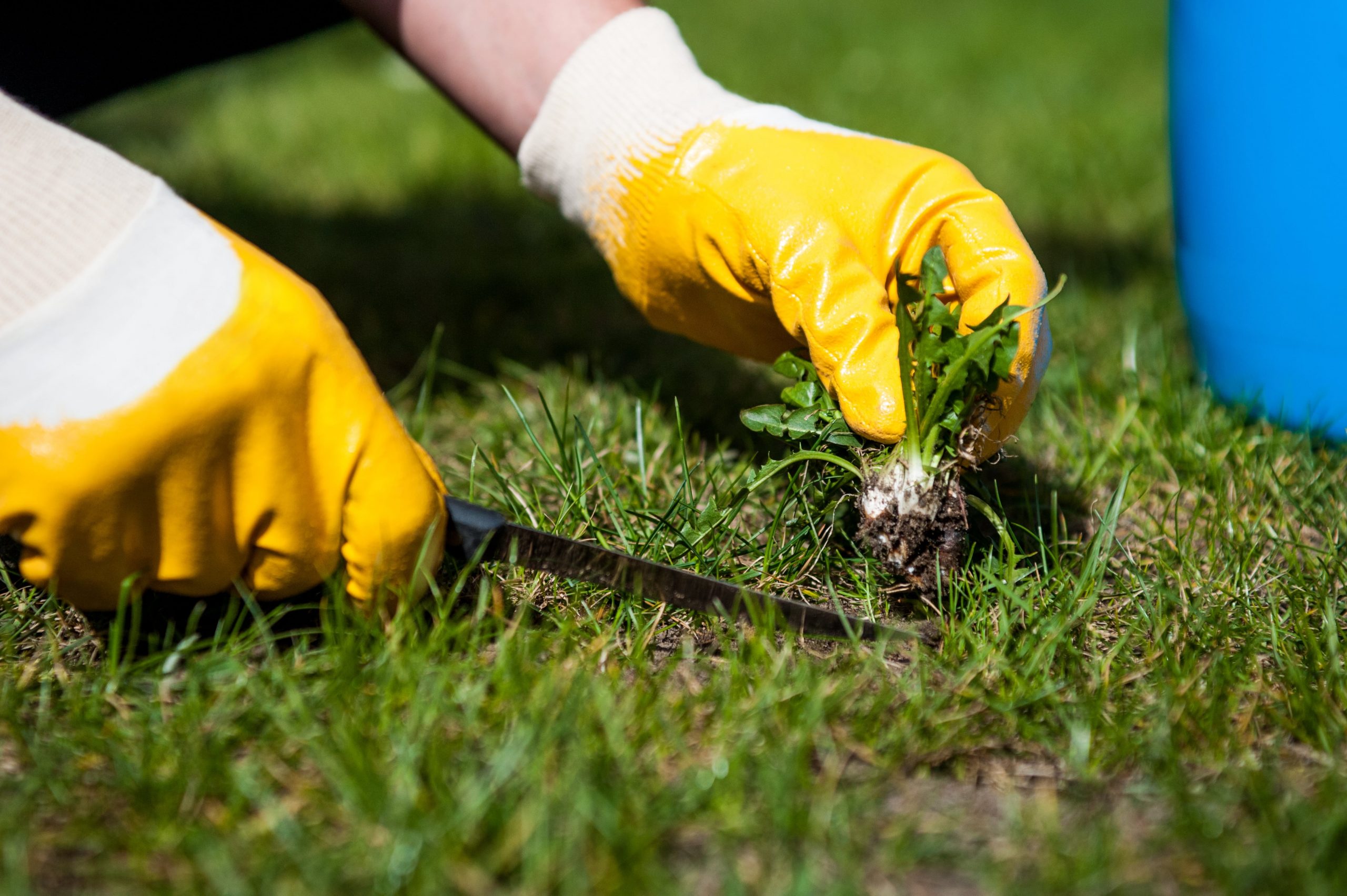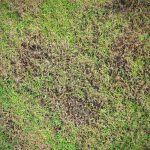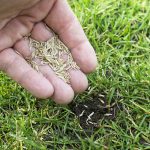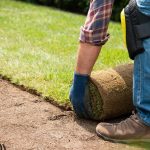If you have a lawn full of weeds, you might be a bit unsure how to repair it, and make your grass look great again.
In this guide, we’ll explain how to get rid of weeds and invasive grasses from your lawn, even if they’ve almost completely taken over.
We’ll explain how to get rid of the weeds (including some natural methods), how to repair the lawn once the weeds are gone, and how to prevent the weeds from coming back once you’ve repaired your lawn.
Step 1: removing the weeds from your lawn
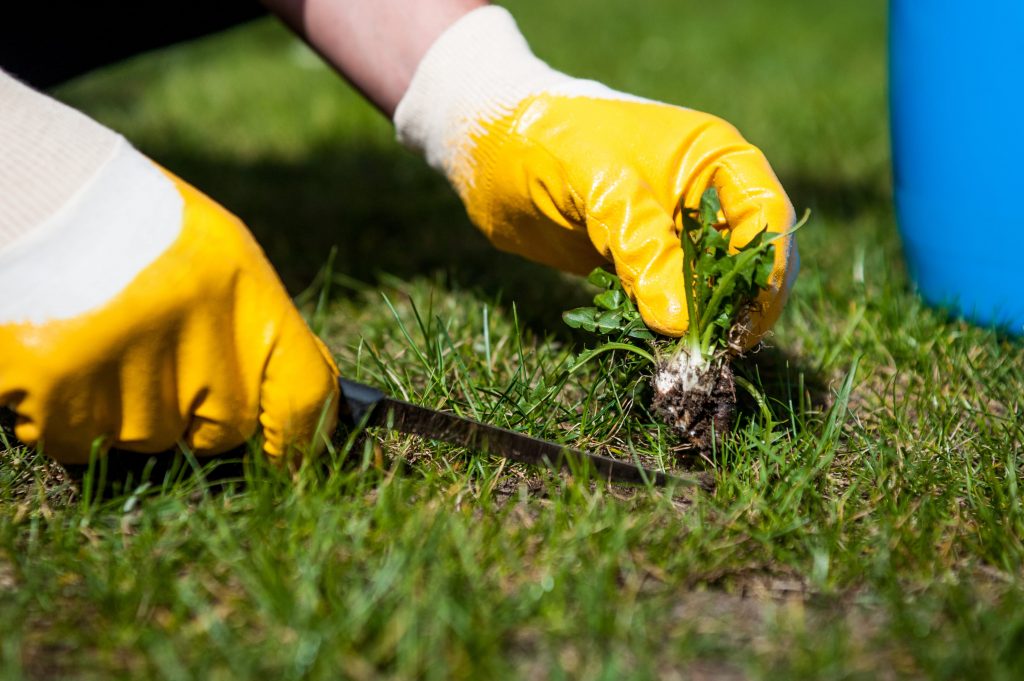
The first thing you need to do is begin the process of removing the weeds from your lawn. This will help you get to a place where you can begin to repair the grass, and make it look more lush.
Before beginning the process, you need to identify the weeds in your lawn. If your lawn is completely full of weeds, you want to ensure that you remove them all before beginning the repair process.
In some cases, it’s very obvious where the weeds are – you might notice flowers, such as dandelions for example. Broadleaf weeds (with large leaves, much bigger than blades of grass) are also easy to identify. However, some types of weeds are harder to spot.
If you’re unsure, look for areas of grass with a slightly different texture or shade of green to other areas of the lawn. Weeds will also perform better or worse than other parts of grass when the weather gets very dry, so look out for this as well.
For more information, you can read our guide to the different types of grass found in the UK. This can help you to determine if a certain plant is a type of grass or a weed.
Once you’ve got a good idea of where your weeds are, you can begin to develop a plan to kill the weeds.
There are a number of different methods you can use to eliminate lawn weeds. Here are some of the best methods to try, in the order that we would use them.
Pull out weeds by hand
Even if your lawn is completely full of weeds, it’s often a good idea to start by pulling out as many as you can by hand. This will reduce the amount of weed killer you’ll need to use, or if you use natural methods instead, it will increase the likelihood of these techniques working effectively.
Using a hand shovel, remove the entire weed, including its root system, and place it into a wheelbarrow or bucket. Try to pick up any leaves or flowers that have fallen off as well.
Use weed killer
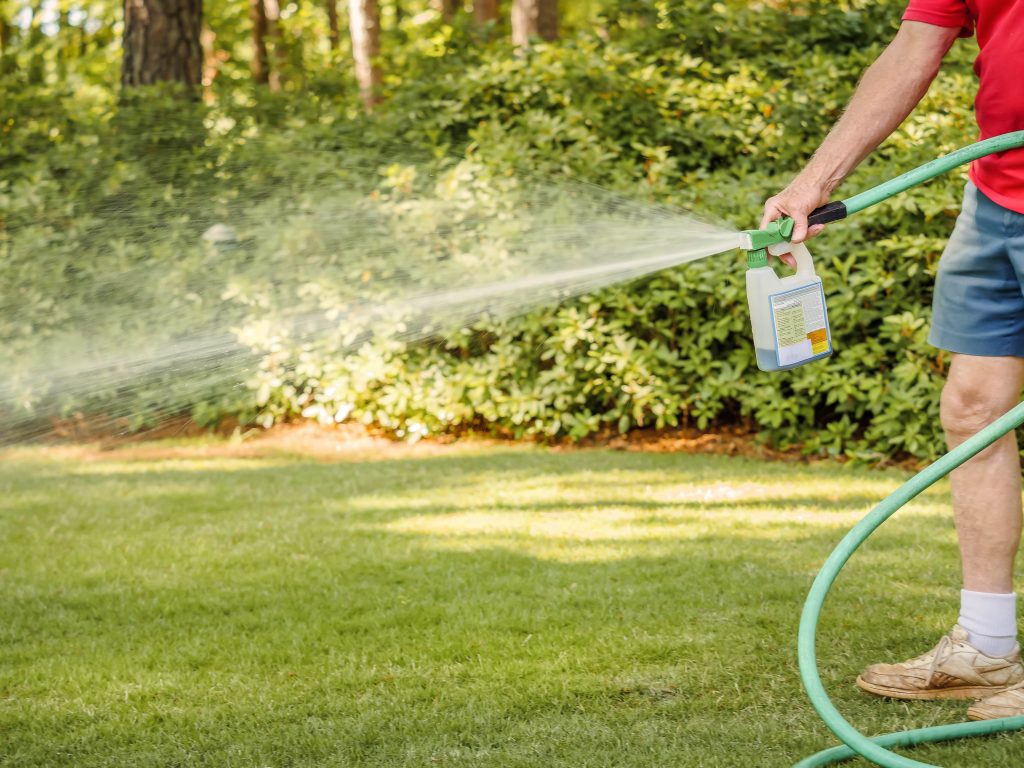
There are a few different reasons why you might like to avoid using herbicide on your lawn. It can be bad for the garden ecosystem, and it can be potentially toxic to kids or pets.
However, if you have a massive weed problem, weed killer might be the best way to solve the issue. Provided you use herbicide in a highly targeted manner, rather than spraying it everywhere, you can avoid some of the downsides associated with using it.
Note: if you’re considering using weed killer because your grass is completely overrun with weeds and you want to kill everything and start fresh, it may be better to smother your lawn rather than use herbicides, to maintain your soil health. We’ll explain how to do this a bit below.
- Choose the right herbicide for the weeds you have. Some weed killers work best on crabgrass or broadleaf weeds for example, while others are best on dandelions. Ensure to get post-emergent weed killer (for weeds that are already showing up), rather than pre-emergent (for preventing future weed issues).
- Spray the herbicide onto individual weeds, following the instructions on the packet. Weed killer will kill your grass, despite what the manufacturer says, so avoid spraying it on good areas of your lawn.
- Keep kids and pets off the lawn for at least a week, or in line with the packet instructions.
- Wait until the weeds die, and carefully pull them out of your lawn.
Use a heat gun
There are a number of natural weed killing methods out there, such as using two parts vinegar and one part baking soda, or spraying the weeds with salt water. The issue with these methods is they can be inconsistent in their results, and they can affect the pH of your soil.
If you don’t want to use herbicide to get rid of weeds, you can also try to use a heat gun. These devices burn and kill individual weeds, making it easy to remove them from your lawn. They normally plug into a power outlet, or have a battery.
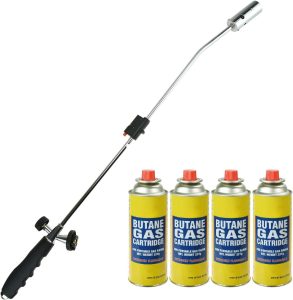
With these devices, you need to be careful not to burn your grass too much, and you want to avoid setting fire to the lawn itself. With small weeds, heat guns will typically burn through them very quickly, and with larger weeds, you might need to wait a few hours for the weed to wither away after using the heat gun.
Smother the lawn
If you have a lawn full of weeds, to the point where there are more weeds than areas of healthy grass, you may want to kill everything on the lawn and start over again.
The best way to do this is to smother the lawn, rather than spraying the entire thing with herbicides. By preventing the weeds from getting any light or water, they will die naturally, along with any remaining grass.
To smother the lawn, use a large tarpaulin, an old carpet, or a combination of both. Ensure to secure the corners well, using pegs or piles of bricks. Then, once the ground is completely covered, wait for about three weeks for the lawn and its weeds to fully decompose.
Step 2: reseeding the lawn

Now that you’ve got a weed-free lawn, you need to re-seed the bare patches of grass with new grass seed.
- If you’ve got any holes in your lawn from where you’ve pulled weeds out of the soil, fill them in with topsoil or compost.
- If you’ve used a herbicide, you will need to wait at least three weeks until you can plant new grass seeds. Check the manufacturer’s directions to see how long you have to wait.
- If your lawn isn’t very healthy, and you plan on overseeding your entire lawn, give it a good raking to clear any debris from the surface.
- Also consider aerating your lawn, and/or spreading a small layer of compost, depending on the health and compaction of the soil.
- Sprinkle grass seeds onto your lawn. You can target bare patches, or spread seeds across your entire lawn using a lawn spreader device.
- Give your lawn a good soaking, to push the grass seed into the soil.
- Water the lawn twice daily for at least a week, assuming you get no rain. Give it extra water if you’re doing this in the summer – it’s normally best to repair a lawn in the spring/autumn instead, if possible.
During this process, you will want to keep foot traffic off your lawn to improve the likelihood of it recovering nice and quickly. The amount of time you need to wait depends on how many seeds you’ve used – if you’ve only used it to target specific weeds or patches of weeds, then you don’t need to keep off your lawn for as long.
Step 3: preventing the weeds from coming back
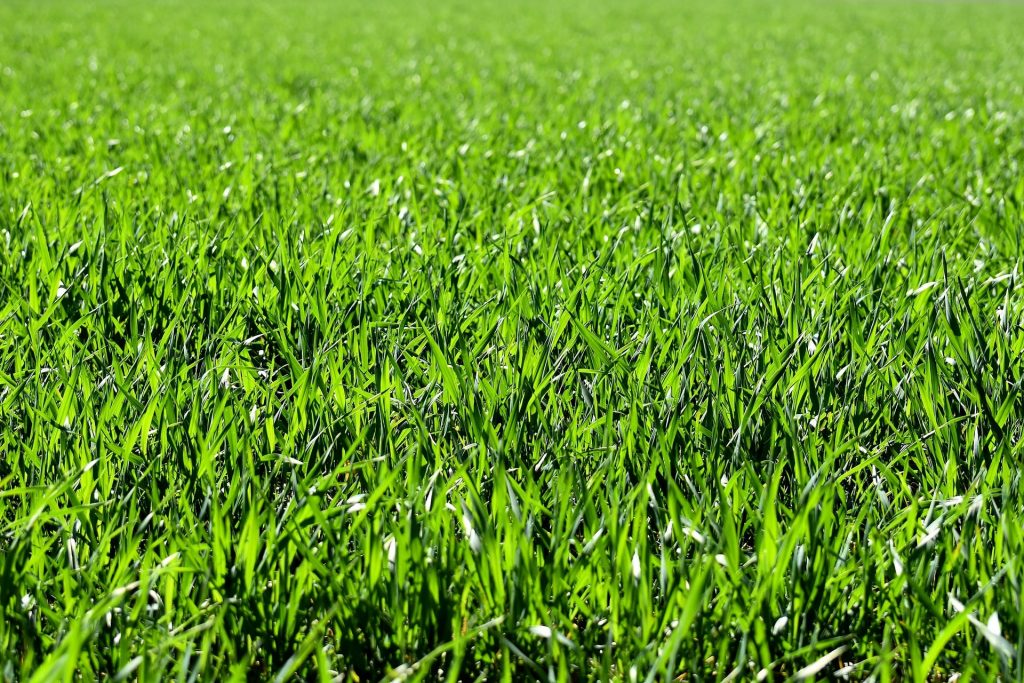
Once you have a healthy lawn again, the key to preventing weeds from returning is your lawn maintenance strategy.
The healthier your lawn, and the better you take care of it, the less likely it is for weeds to take hold. There may be weed seeds in the soil, but if your lawn is lush, then this makes weed growth much less likely.
This doesn’t mean that you need to spend hours every week fastidiously mowing, fertilising and caring for your lawn – it just means applying some of the following tips to help encourage healthy lawn growth.
- Mow your lawn often, with a sharp mower blade, and a high cutting height – taking no more than a third of the length off at once. This will avoid you cutting your grass too short, which can hinder its growth.
- Aerate your lawn about once every year, especially if the soil is highly compacted. This helps your lawn’s roots get the air and moisture they need to grow strong.
- Scarify your lawn about once a year, especially if you have a thatch problem. Lawns with too much thatch can struggle to breathe – the roots don’t get enough air, nor enough sunlight. It’s important to note, new lawns shouldn’t be scarified – you need to give your seeds time to grow and become established.
- Apply fertiliser once or twice a year, especially in the spring.
- Rake the lawn when it gets covered in leaves, or other debris from plants, such as flowers. Keeping your lawn free of debris is especially important in the autumn.
- Water your lawn when the weather gets warm and dry, especially in the summer and autumn.
- Ensure your lawn gets enough sunlight. If you often notice moss problems for example, it could be worth cutting back some plants or trees to ensure your grass gets enough sunlight.
Some people like to use pre-emergent weed killers to prevent weeds from taking control. While herbicides are an effective weed control method, they’re not necessary as long as your lawn and soil are healthy. You don’t need to rely on herbicides to keep weeds under control in the long term.
If you do notice weeds on the surface of your lawn again, try to get to them early. You want to dig the weeds out of the ground, roots and all, as soon as they appear, to prevent their spread.
Also, when mowing, be sure to collect your clippings, rather than mulching them. This also helps to prevent the weeds from spreading.
You can use our lawn care calendar to learn more about the steps you can take to maintain your lawn in spring, summer, autumn, and winter.
Conclusion
This is the end of our weed control guide. Hopefully this article gave you some ideas about how to repair a lawn full of weeds.
If you have any questions about creating a weed treatment plan for your garden, feel free to leave a comment below and we’ll get right back to you.

I’m Josh, and I’m the head writer at Lawn Care Pro.
I love everything lawns, but I’m a bit of a lawn mower nerd. I spend a lot of my free time tinkering with mowers, and planning my mowing schedule for the next few weeks.
I’m also into cars, which comes in very helpful when servicing a mower engine!

